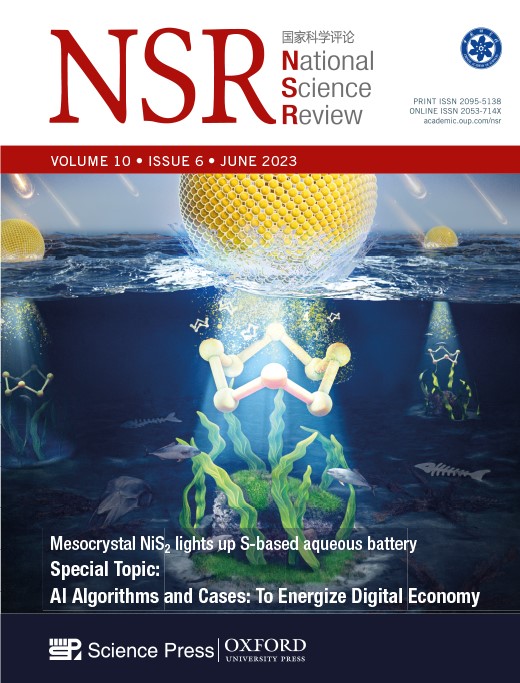锌阳极与水泥的结合:开启可扩展的能源储存技术
IF 16.3
1区 综合性期刊
Q1 MULTIDISCIPLINARY SCIENCES
引用次数: 0
摘要
大量的现有建筑和每年不断进行的基础设施建设,凸显了将大规模储能解决方案集成到这些结构中的巨大潜力。在此,我们提出了一种创新方法,通过将安全且经济高效的锌离子混合超级电容器集成到水泥砂浆(用于结构目的的主要材料)中,开发结构性可扩展储能系统。通过夹带空气和利用 ZnSO4 电解质的逆反应,我们可以设计出一种具有多尺度孔隙结构的充气水泥砂浆,这种结构具有双重功能:以电池分离器的形式实现有效的离子传导性,以及有助于结构完整性的强大承载能力。因此,由定制水泥砂浆、锌金属阳极和活性碳阴极组成的混合超级电容器构件显示出卓越的比能量密度(71.4 Wh kg-1,68.7 W kg-1)、高面能量密度(2.0 Wh m-2,1.9 W m-2)、良好的循环稳定性(1000 次循环后容量保持率为 92%)和卓越的安全性(1 小时燃烧测试中的耐久性)。通过展示结构储能系统与太阳能发电相结合的可扩展性,这种新装置展现出了彻底改变储能系统的巨大潜力。本文章由计算机程序翻译,如有差异,请以英文原文为准。
Integration of zinc anode and cement: unlocking scalable energy storage
The significant volume of existing buildings and ongoing annual construction of infrastructure underscore the vast potential for integrating large-scale energy storage solutions into these structures. Herein, we propose an innovative approach for developing structural and scalable energy storage systems by integrating safe and cost-effective zinc-ion hybrid supercapacitors into cement mortar, which is the predominant material used for structural purposes. By performing air entrainment and leveraging the adverse reaction of the ZnSO4 electrolyte, we can engineer an aerated cement mortar with a multiscale pore structure that exhibits dual functionality: effective ion conductivity in the form of a cell separator and a robust load-bearing capacity that contributes to structural integrity. Consequently, a hybrid supercapacitor building block consisting of a tailored cement mortar, zinc metal anode, and active carbon cathode demonstrates exceptional specific energy density (71.4 Wh kg−1 at 68.7 W kg−1), high areal energy density (2.0 Wh m−2 at 1.9 W m−2), favorable cycling stability (∼92% capacity retention after 1000 cycles), and exceptional safety (endurance in a 1-hour combustion test). By demonstrating the scalability of the structural energy storage system coupled with solar energy generation, this new device exhibits great potential to revolutionize energy storage systems.
求助全文
通过发布文献求助,成功后即可免费获取论文全文。
去求助
来源期刊

National Science Review
MULTIDISCIPLINARY SCIENCES-
CiteScore
24.10
自引率
1.90%
发文量
249
审稿时长
13 weeks
期刊介绍:
National Science Review (NSR; ISSN abbreviation: Natl. Sci. Rev.) is an English-language peer-reviewed multidisciplinary open-access scientific journal published by Oxford University Press under the auspices of the Chinese Academy of Sciences.According to Journal Citation Reports, its 2021 impact factor was 23.178.
National Science Review publishes both review articles and perspectives as well as original research in the form of brief communications and research articles.
 求助内容:
求助内容: 应助结果提醒方式:
应助结果提醒方式:


